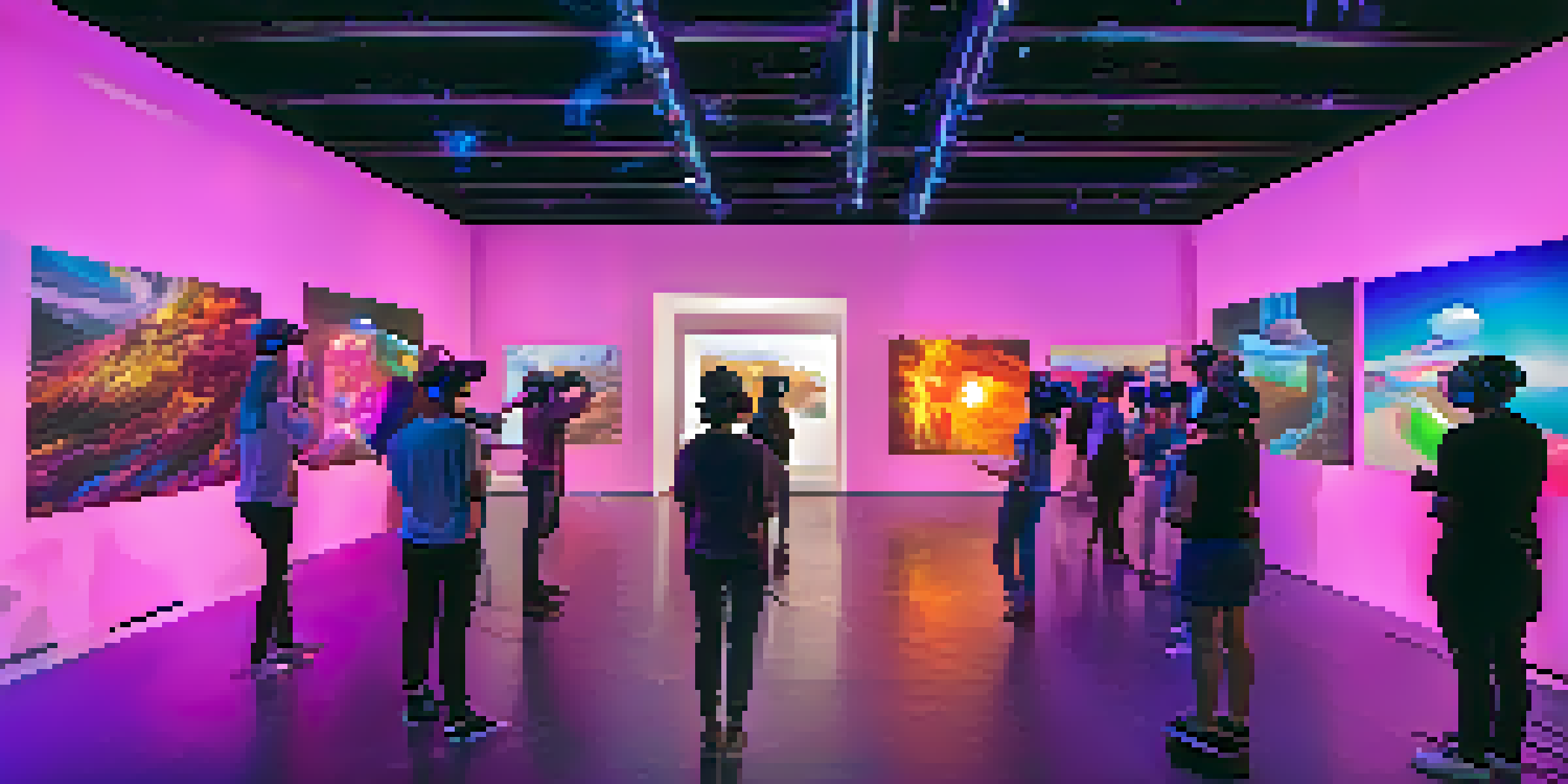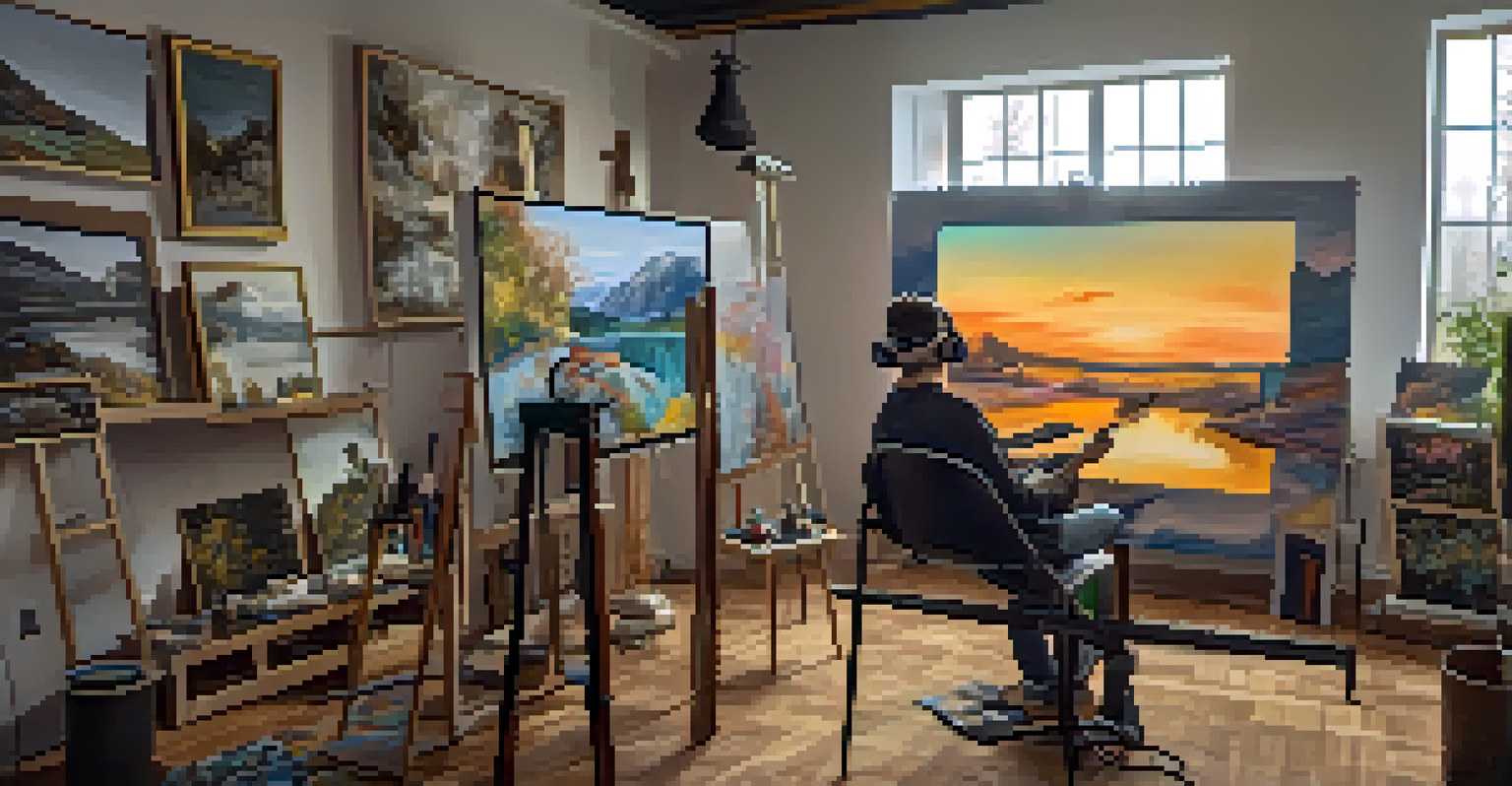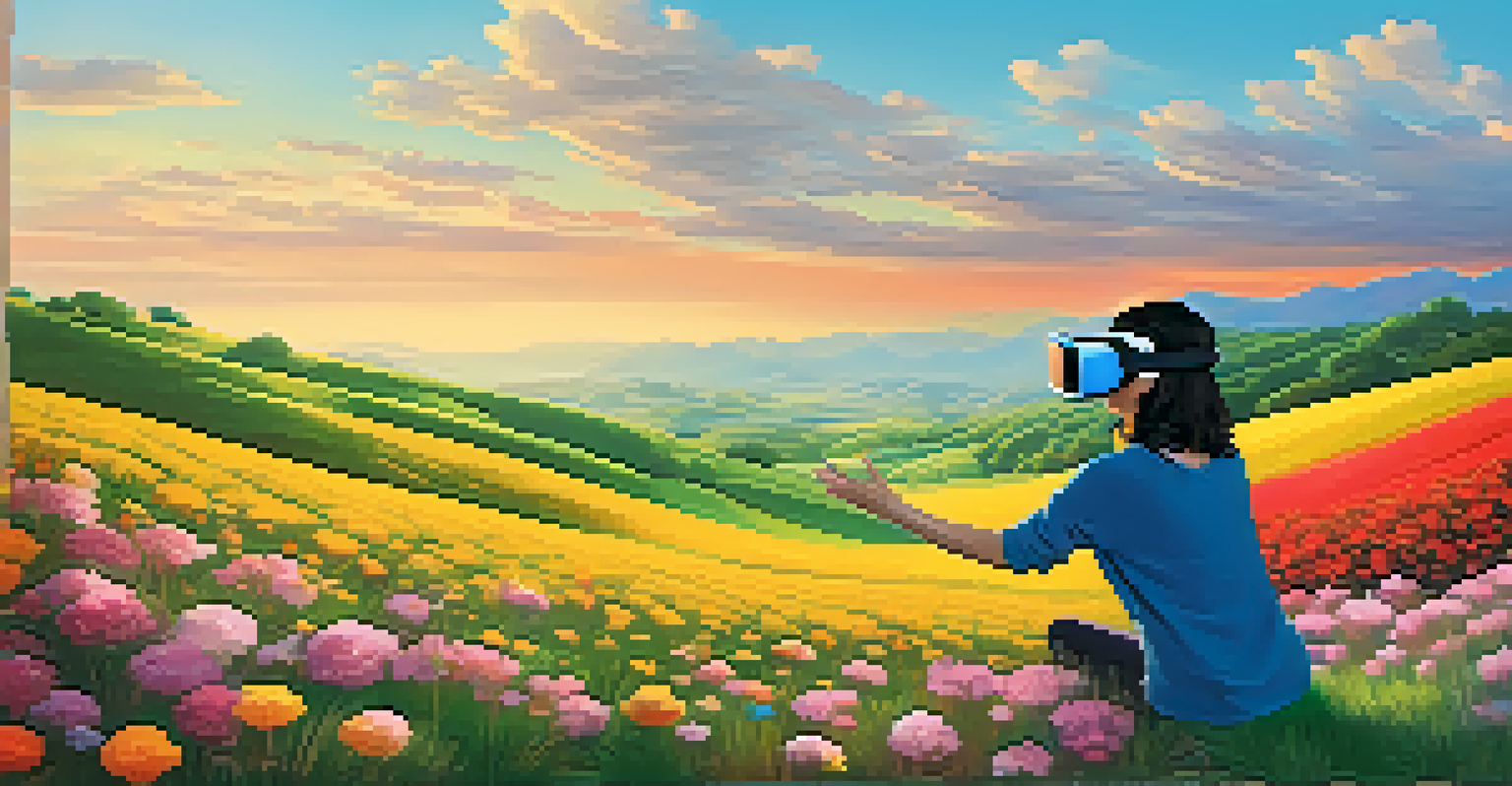Emerging Artists: Virtual Reality as a Platform for Innovation

The Rise of Virtual Reality in the Art World
In recent years, virtual reality (VR) has emerged as a dynamic medium for artists looking to push creative boundaries. Unlike traditional forms of art, VR offers a unique immersive experience that allows viewers to engage with the art in a three-dimensional space. This technology has not only expanded the canvas for established artists but has also opened new doors for emerging talents to showcase their visions.
Art is not what you see, but what you make others see.
Artists can now create entire worlds, allowing audiences to step inside and interact with their work. For instance, using VR, one can walk through a digital landscape that shifts and changes with each movement, providing a personal connection to the art. This level of engagement is something that traditional art forms often lack, making VR a compelling platform for innovative expression.
Moreover, as VR technology becomes more accessible, emerging artists can experiment without the constraints of physical materials or gallery spaces. This democratization of art is crucial, as it encourages diverse voices and perspectives to enter the conversation, ultimately enriching the art world.
Breaking Down Barriers with Immersive Experiences
One of the most exciting aspects of VR art is its ability to break down traditional barriers. Artists can now reach global audiences without the limitations of geography or physical exhibitions. This means that a young artist in a small town can share their work with viewers across the globe, creating a more inclusive art ecosystem.

Additionally, VR allows for a level of interactivity that traditional art forms often struggle to achieve. Viewers can influence the artwork in real-time, making each experience unique and personal. Imagine walking through a VR installation where the colors and shapes change based on your movements or choices—this level of engagement fosters a deeper connection between the artist and the audience.
VR Expands Artistic Horizons
Virtual reality allows artists to create immersive experiences, engaging audiences in ways traditional art cannot.
This shift not only empowers artists but also invites audiences to become active participants in the creative process. By breaking down barriers, VR is creating a new communal space for art that reflects a diverse array of experiences and emotions.
Incorporating Technology into Artistic Processes
Emerging artists are increasingly blending technology with traditional techniques, resulting in innovative works that challenge conventional definitions of art. For instance, some artists are using VR to create digital paintings, sculptures, and installations that can only exist in a virtual realm. This fusion of mediums allows for endless possibilities and encourages experimentation.
The future belongs to those who believe in the beauty of their dreams.
Moreover, VR tools and software are becoming more user-friendly, enabling artists without extensive technical backgrounds to explore this medium. This accessibility leads to a surge of creativity, as diverse artists can now bring their ideas to life with minimal barriers. The outcome is a vibrant landscape of artistic expression that reflects a multitude of voices and perspectives.
By embracing technology, these artists not only redefine their own practices but also contribute to a broader dialogue about the future of art. This evolution is essential as it keeps the art community in tune with technological advancements and societal changes.
Creating Community Through Virtual Platforms
Virtual reality is not just a tool for creation; it also fosters community among artists and audiences alike. Online platforms and VR art exhibitions allow artists to connect, collaborate, and share their work with like-minded individuals. This sense of belonging can be crucial for emerging artists, who often face challenges in gaining recognition.
In virtual spaces, artists can host live events, workshops, and discussions, bringing people together from different backgrounds and locations. This collaborative spirit can lead to innovative projects that blend various disciplines, from visual art to music and performance. The result is a rich tapestry of creativity that transcends traditional boundaries.
Global Reach for Emerging Artists
VR breaks geographical barriers, enabling artists from anywhere to share their work with a global audience.
Furthermore, these communities provide vital support networks for emerging artists. They can share resources, receive feedback, and find inspiration through collaboration, ultimately helping to nurture their growth and success in the art world.
Challenges and Opportunities in VR Art
While the prospects of virtual reality in the art world are exciting, emerging artists also face unique challenges. The technology can be expensive, and not all artists have access to the necessary equipment or software to create VR art. This digital divide can limit opportunities for some, particularly those from underrepresented backgrounds.
Additionally, as the landscape of VR art continues to evolve, artists must stay informed about new tools and trends. This constant learning curve can be overwhelming, especially for those who are already balancing multiple responsibilities. However, overcoming these challenges can lead to significant growth and innovation.
Despite these hurdles, the opportunities presented by VR are vast. By leveraging community support and accessing educational resources, emerging artists can navigate these challenges and carve out a successful path in the evolving digital art landscape.
The Future of Art: A Virtual Perspective
As we look to the future, it's evident that virtual reality will continue to play a significant role in shaping the art world. Emerging artists are at the forefront of this transformation, using VR to challenge norms, explore new possibilities, and engage with audiences in unprecedented ways. This shift is not just about technology; it's about redefining what art can be.
The potential for VR to create immersive narratives and experiences means that artists can tell their stories in ways that resonate deeply with viewers. As more artists embrace this medium, we can expect a diverse array of voices and perspectives to emerge, enriching the cultural landscape.
Community and Collaboration in VR
Virtual platforms foster collaboration among artists, creating supportive networks that enhance creativity and growth.
Ultimately, the future of art lies in the hands of these innovative creators who are willing to take risks and explore uncharted territories. Their work in virtual reality will undoubtedly inspire the next generation of artists and continue to transform the way we experience art.
Embracing Change: The Role of Emerging Artists
Emerging artists have always been a driving force in the evolution of art, and their role is even more critical in the era of virtual reality. By embracing change and exploring new mediums, they not only challenge the status quo but also encourage audiences to rethink their understanding of art. Their willingness to innovate can inspire others to take creative risks.
As they navigate the intersection of art and technology, these artists are shaping the future of creative expression. Their work invites us to engage with art in ways we never thought possible, fostering a deeper appreciation for the diverse talents that exist in this space. Through their unique perspectives, emerging artists are crucial in expanding the boundaries of what art can achieve.

In this rapidly changing landscape, the message is clear: the future of art is bright and full of potential. By championing emerging artists and their contributions to virtual reality, we can support a vibrant community that continuously evolves, ensuring that art remains a vital part of our shared human experience.